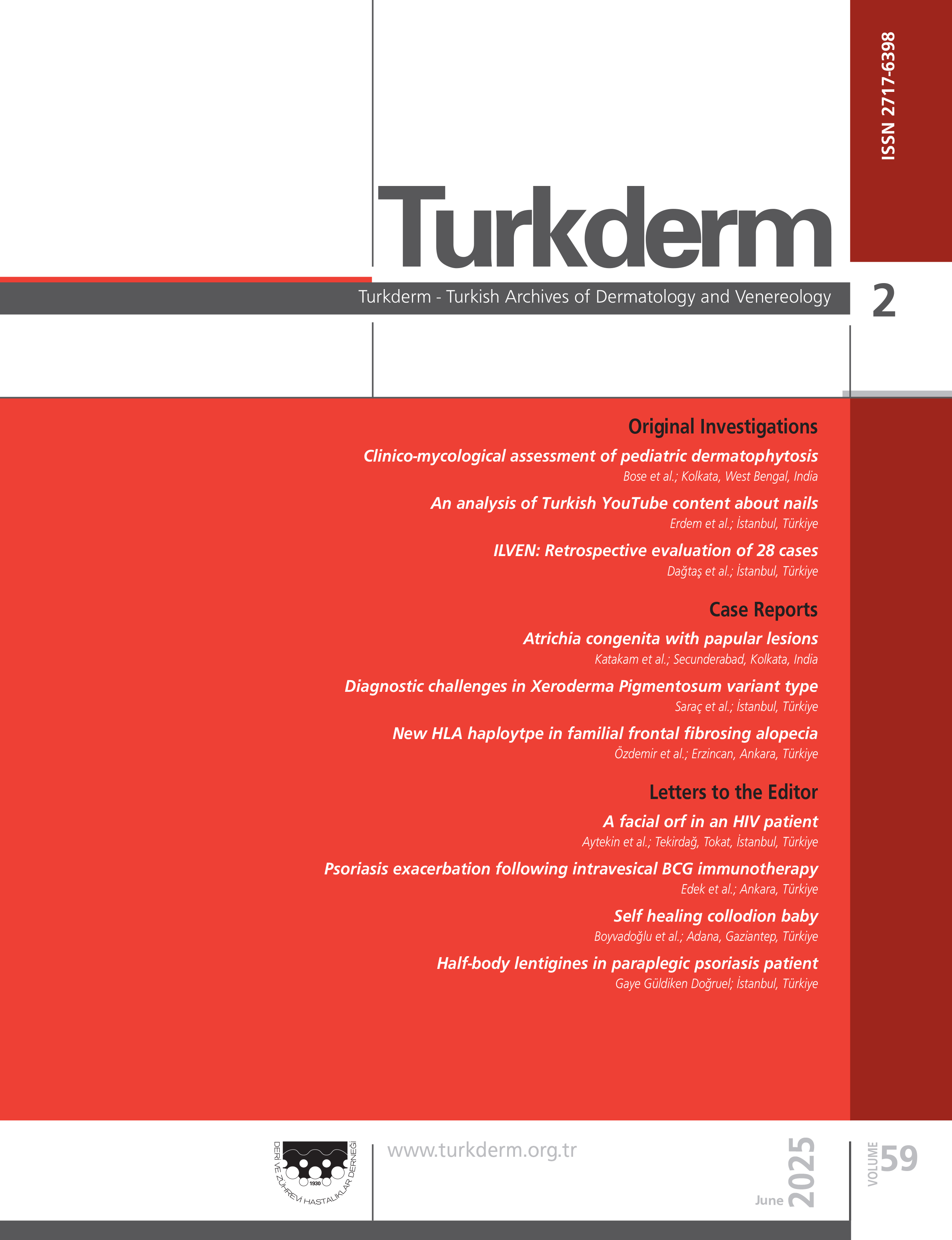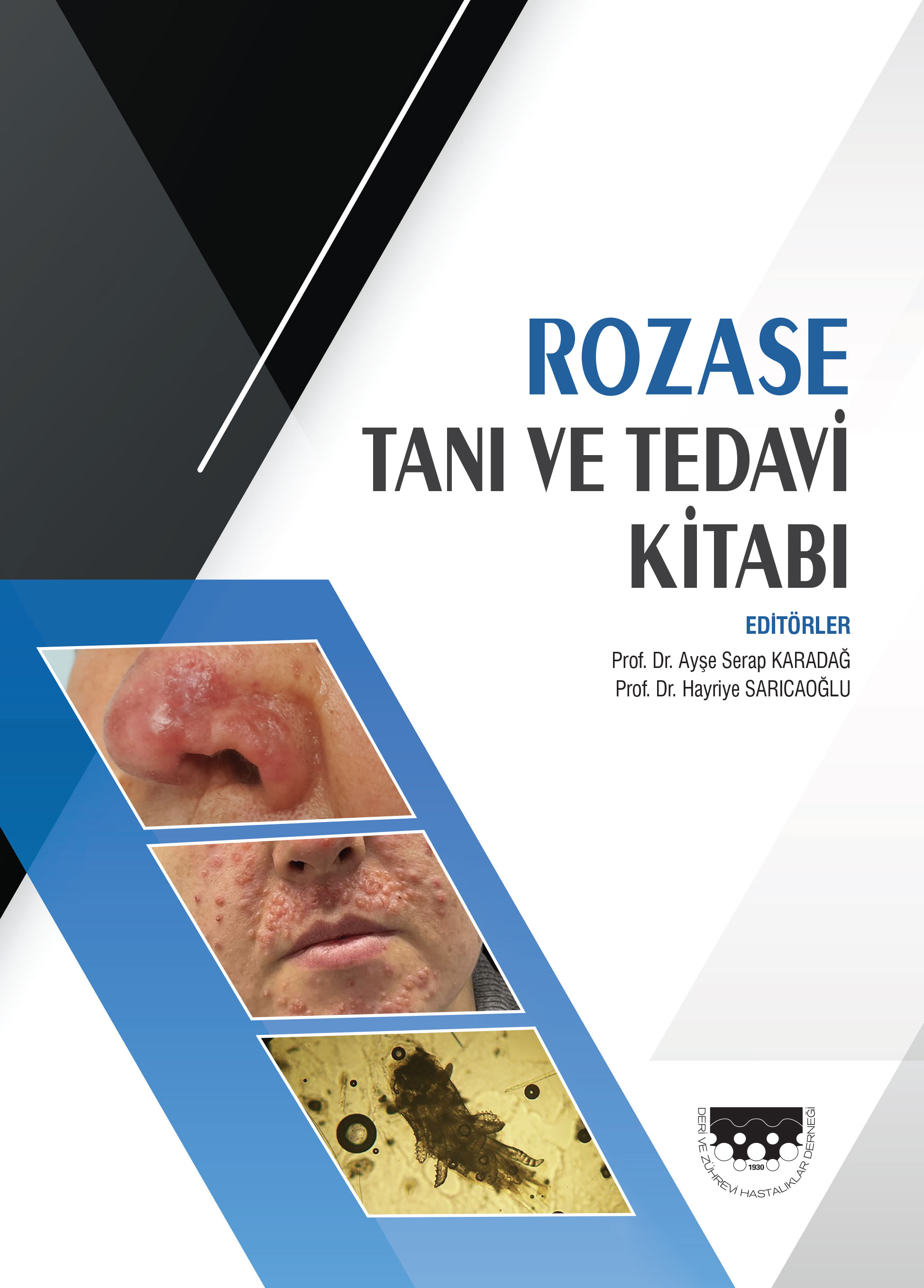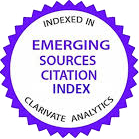Volume: 55 Issue: 2 - 2021
| 1. | Cover Pages I - VI |
| REVIEW ARTICLE | |
| 2. | The role of epidermal differentiation gene complex studies in atopic dermatitis Özge Gündüz, Deepak Modi, Raquel Duarte doi: 10.4274/turkderm.galenos.2020.23326 Pages 56 - 60 Atopic dermatitis (AD) is a chronic skin disease affecting mainly children with an increasing prevalence worldwide. AD is a complex trait resulting from genetic predisposition, skin barrier dysfunction, immune dysregulation, and environmental factors. The major risk factors for AD are a family history of atopy (eczema, asthma, or allergic rhinitis) and the loss-of-function mutations in the filaggrin (FLG) gene. This review highlights the role of the genetic abnormalities identified in AD, from the susceptibility loci in genome-wide associations to epigenetic studies. |
| 3. | Turkish Armed Forces health competence regulation interpretation recommendations Aslan Yürekli, Ayşenur Botsalı, Ercan Çalışkan doi: 10.4274/turkderm.galenos.2020.93284 Pages 61 - 69 After the transfer of military hospitals to the Ministry of Health, examinations of candidates for military personnel and those who are currently military personnel have started to be carried out by civilian doctors whether they are suitable for military service. Civilian doctors are unfamiliar with this practice and therefore hesitate to decide on some issues. The aim of this review is to interpret the skin and venereal diseases section of the Turkish Armed Forces (TAF) health competence regulation (HCR) and to assist to civilian physicians about regulation that they are foreigners. |
| ORIGINAL INVESTIGATION | |
| 4. | The impact of vitamin D deficiency and autoimmunity on chronic spontaneous urticaria severity Nurcan Metin, Mustafa Teoman Erdem doi: 10.4274/turkderm.galenos.2020.30503 Pages 70 - 74 Background and Design: In this study, we investigated the role of vitamin D deficiency and autoimmunity in chronic spontaneous urticaria (CSU) etiopathogenesis and their impact on the disease severity. Materials and Methods: Sixty patients with CSU aged between 18 and 65 years were enrolled to the study. The control group comprised 40 healthy individuals who had no episodes of urticaria or any other chronic diseases. An autologous serum skin test (ASST) was performed in all patients. In addition, 25 hydroxyvitamin D, thyroid autoantibodies (TA), anti-nuclear antibody (ANA), and basophils were evaluated in all groups. Urticaria activity score-7 (UAS7) and dermatological quality of life index (DLQI) of all patients were examined. Results: Angioedema was more frequent and UAS7 was higher in ASST-positive patients than ASST-negative patients (p=0.035, p=0.018, respectively). <10 ng/mL vitamin D levels were more fraquently seen in the patients with CU than in the control group (p=0.002). The frequencies of TA and ANA positivity were higher, and basophil count was lower in all patients compared to the control group (p=0.001, p=0.001, p=0.001, respectively). The quality of life was more impaired in patients with positive ASST (p=0.011). The duration of the disease was longer, and UAS7 was higher in patients with positive-TA (p=0.012, p=0.028, respectively). UAS7 was significantly higher in ANA-positive patients (p=0.042). A significant negative correlation was found between the DLQI and basophil counts (p=0.039). Conclusion: Understanding the role of vitamin D deficiency, autoimmunity in CSU etiopathogenesis may help treat severe diseases. |
| 5. | Investigation of the knowledge level, attitudes, and behaviors about sun protection and sunscreen in adolescent athletes Havva Hilal Ayvaz, Hüseyin Tolga Acar, Sabriye Ercan, Cem Çetin doi: 10.4274/turkderm.galenos.2020.62372 Pages 75 - 80 Background and Design: This study aims to evaluate the knowledge level of adolescent licensed athletes between the ages of 12 and 18 years about sun protection and sunscreen use. Materials and Methods: In our province, 644 adolescents engaged in sports under license were included in the study. Samples were selected by the stratification method. The questionnaires were filled by face-to-face interview techniques in the athletes training environment. Demographic data of the participants were recorded. Then, the participants were administered the Sun Protection and Use of Sunscreen Change Stages scales and Sun Protection Behavior scale, Sun Protection Decision Balance scale, Sun Protection Self-Efficacy scale, which were prepared based on the transtheoretical model (TTM) theory. Adolescent athletes were divided into two groups according to the place where they train/match as Indoor (Groupindoor) and Outdoor (Groupoutdoor) athletes. Results: While 59% (n=380) of the athletes participate in training/competition indoors (Groupindoor), 41% (n=264) of the athletes participate in outdoors (Groupoutdoor). According to TTM; 60.2% (n=388) of the athletes are at the stage of precontemplation, and 12.7% (n=82) of the Sun Protection Change Stages are maintenance. On the other hand, it was determined that 69.1% (n=445) of the athletes were in the step of precontemplation, and 10.7% (n=69) of the maintenance step of the use of sunscreen change stage scale. The scale results administered to adolescent athletes did not differ between the groups (p˃0.05). Conclusion: In light of the data we obtained from our study, it was determined that the adolescent age group athletes have a low level of knowledge about sun protection, sunscreen use, and skin cancer, regardless of sports discipline in the outdoors or indoors. We recommend training and counseling for all adolescent athletes about the harmful effects of the sun. |
| 6. | Disseminated insect bite reactions in hazelnut workers Işıl Deniz Oğuz, Sevgi Kulaklı, Burak Akşan doi: 10.4274/turkderm.galenos.2020.41524 Pages 81 - 86 Background and Design: Hazelnut is one of the most important agricultural products of Turkey. About 150 species of insects were reported in hazelnut orchards. Several skin reactions can be seen in hazelnut workers due to contact with the insects. The objective of this study is to investigate the clinical properties of a type of disseminated insect bite reaction detected in hazelnut workers that has not been reported yet. Materials and Methods: In our study, we investigated patients who presented to our outpatient clinic with disseminated insect bite reactions after entering hazelnut orchards prospectively. Patients age, gender, clinical properties of lesions, body areas of involvement, number of lesions, subjective symptoms, duration, blood groups, and prescribed treatments were recorded. The features of the hazelnut orchards were also recorded. Results: One hundred and twenty-seven patients (45 males; 82 females) were included in the study. Mean age of the patients was 42.5±16.69 years. Lesion placements were mostly on the hip (88.2%), leg (78.7%), and back-waist (72.4%) areas. Eighty-five percentage of the patients had violaceous papules, 10.2% showed papular urticaria, and 4.7% with vasculitis-like purpuric papules. Fifty-nine percentage of the patients had between zero and 50 lesions, 28.4% had 50 and 100, and 12.6% of the patients had more than 100 lesions. Severe pruritus was seen in 97.6% of the patients. Conclusion: Insect bite reactions are severe health issues in hazelnut workers. There are limited studies on arthropod-induced dermatoses in hazelnut orchards. However, we demonstrated a novel insect bite reaction pattern of hazelnut workers, which was not defined before in the literature. Defining the condition in the literature and performing further controlled field studies with larger series would help define and prevent the causes of the condition. |
| 7. | Type D personality and quality of life in alopecia areata and vitiligo patients: A cross-sectional study in a Turkish population Güldehan Atış, Atilla Tekin, Zeynep Altan Ferhatoğlu, Fatih Göktay, Şirin Yaşar, Sema Aytekin doi: 10.4274/turkderm.galenos.2020.36776 Pages 87 - 91 Background and Design: Vitiligo and alopecia areata (AA) can lead to stigma, shame, and embarrassment, and all of which can potentially result in social stress and poor quality of life (QoL). The incidence of Type D personality is higher in those with psychosomatic diseases. This study aimed to investigate the incidence of Type D personality in patients with vitiligo and AA in a Turkish population. Materials and Methods: This study prospectively enrolled 39 patients with AA, 46 patients with vitiligo, and 46 healthy individuals as controls. All the patients and healthy volunteers completed the Hospital Anxiety and Depression scale (HAD), Type D Personality scale (DS-14), and Dermatology Life Quality index. Results: There was no significant difference in the frequency of Type D personality among the three groups. The mean negative affectivity scores of the AA and vitiligo groups were significantly higher than those of the healthy controls (p=0.001). The mean HAD-A scores of the AA and vitiligo groups were significantly higher than those of the healthy controls (p=0.002). Conclusion: Our results revealed a relationship between the DS-14 total score and QoL in patients with vitiligo, with a higher total score associated with poor QoL. On the other hand, we did not detect this relationship in patients with AA. Type D personality is associated with elevated levels of psychological distress; thus, it may be related to poor QoL in vitiligo patients. Although we found high rates of Type D personality in patients with AA or vitiligo, there was no significant difference in the prevalence of Type D personality in the patient populations compared with that in the healthy control group. |
| CASE REPORT | |
| 8. | Diffuse large B-cell lymphoma that develops after adalimumab using adalimumab in a patient with psoriasis Esra Yıldırım Bay, Elif Moustafa, İlteris Oğuz Topal, Özben Yalçın, Naciye Demirel doi: 10.4274/turkderm.galenos.2020.34356 Pages 92 - 95 Psoriasis is a polygenic, systemic inflammatory disease seen in 2% to 3% of the population and leads to a serious deterioration in the quality of life. As a result, studies on the pathophysiology of this disease have led to the development of cytokine-targeted therapies, especially the widespread use of treatments targeting tumor necrosis factor-alpha (TNF-α). The role of TNF-α in inflammation and important physiological pathways has increased safety concerns. In the literature, it has been reported that infections, cardiac failure, neurological diseases, and malignancies may develop related to the use of anti-TNF-α agents. In this case report, a 59-year-old male patient was started on adalimumab as a biological agent for erythrodermic psoriasis. Twenty-four months after starting biological agent therapy, hard nodules occurred under his skin in both the inguinal and axillary regions. The patient was diagnosed with diffuse large B-cell lymphoma based on his histopathological and laboratory examinations. This case report aims to discuss the specific malignancies that may develop from anti-TNF-α agents and the potential pathophysiological mechanisms suggested in the current literature. |
| 9. | Merkel cell carcinoma arising from postoperative scar: An unusual presentation Mualla Polat, Tekden Karapınar, Hesna Müzeyyen Astarcı, Bengü Tuman, Metin Görgü doi: 10.4274/turkderm.galenos.2021.82160 Pages 96 - 98 Merkel cell carcinoma (MCC) is an aggressive and uncommon primary cutaneous neuroendocrine cancer. With unknown pathogenesis, immunosuppression, ultraviolet radiation, Merkel cell polyomavirus, and arsenic exposure are the risk factors. Reported here is a rare case of MCC developing on a scar tissue. |
| TIPS FOR INTERVENTIONAL DERMATOLOGY | |
| 10. | Two hearts beat as one: An easy method to design a hard flap Leyla Huseynova, Gonca Elçin doi: 10.4274/turkderm.galenos.2020.34979 Pages 99 - 101 |























